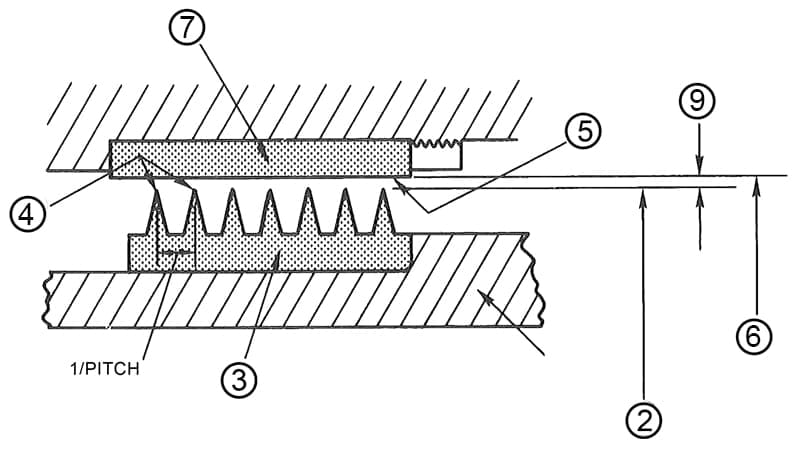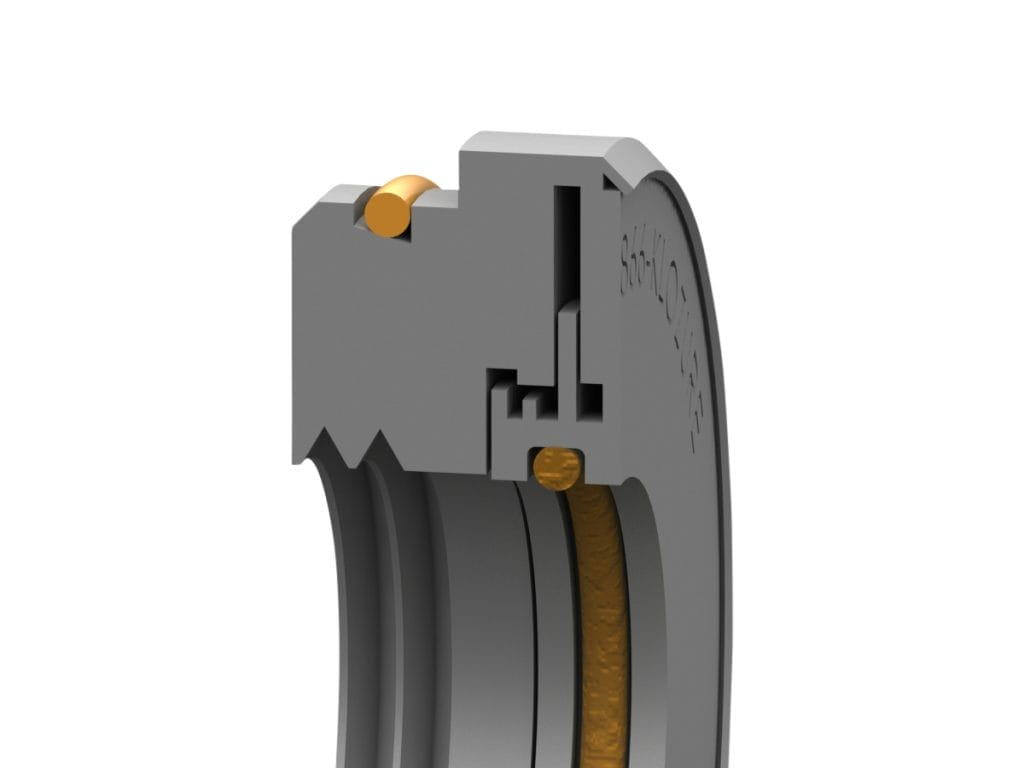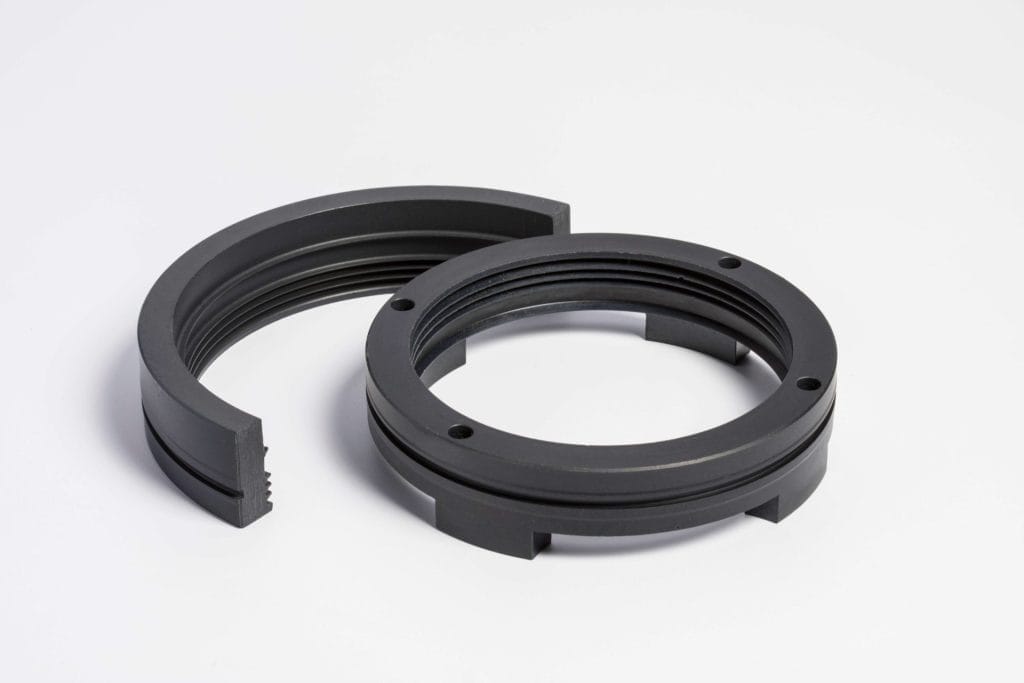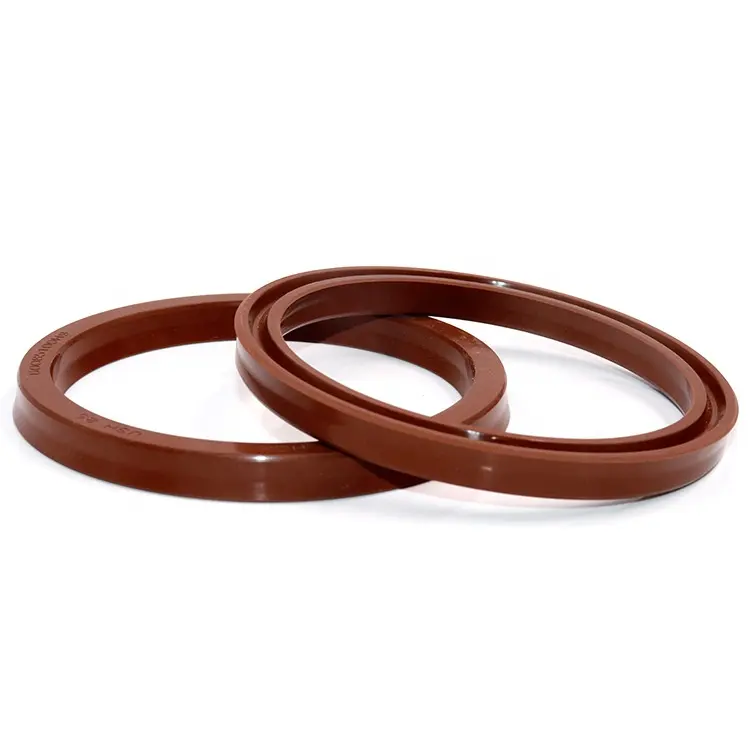In the high-stakes realm of mechanical engineering, the need for robust sealing solutions is paramount to ensure the optimal performance and longevity of rotating equipment. Among the myriad of seal designs employed today stands a marvel of precision engineering—the labyrinth seal. Esteemed for its ability to restrict fluid flow without contact between rotating and stationary components, this seal type has become indispensable in a variety of industrial applications. This article delves into the design intricacies and key components that define labyrinth seals, providing insight into their operational principles and the technological finesse behind their effectiveness.
With an emphasis on technical accuracy, this exposition aims to dissect the sophisticated architecture of labyrinth seals. From gas turbines to compressors, their impact on machinery efficiency is measurable by endurance in harsh environments and minimal leakage rates. Professionals in the field will find this piece not only enlightening but also a reinforcing guide through the maze-like pathways that epitomize these complex seals.

Design Principles of Labyrinth Seals
Labyrinth seals, known for their reliability in minimizing leakage between sections in turbomachinery, adhere to specific design principles that determine their effectiveness. The foundational objective of a labyrinth seal is to increase the path length and resistance to flow without introducing significant friction to rotating components.
| Design Principle | Description |
|---|---|
| Sharp-Edged Obstacles (Teeth) | Create sharp-edged obstacles to interrupt fluid flow, increase path length, and dissipate energy, minimizing clearances between rotating and stationary parts. |
| Balance between Leakage and Rotation Impedance | Precisely align rotor and stator, maintaining close proximity without contact, consider thermal expansion effects, and ensure geometric accuracy of grooves and channels. |
| Material Selection for Temperature Stability | Choose appropriate materials for different temperature ranges, manage thermal gradients to prevent distortion, and adjust teeth size, spacing, and shape accordingly. |
| Aerodynamic Considerations | Account for aerodynamic losses in high-speed equipment, analyze flow characteristics (turbulence, pressure drops, velocity profiles) using Computational Fluid Dynamics (CFD). |
| Computational Methods | Utilize Computational Fluid Dynamics (CFD) simulations to visualize flow patterns, establish parameters, and aid in the design phase. |
Strict adherence to these principles is essential for designing effective labyrinth seals while maintaining machinery performance and longevity.
Components of a Labyrinth Seal
| Component | Description | Materials Used |
|---|---|---|
| Teeth | Circular ridges that create a tortuous path for fluid to flow through. | Stainless steel, Carbon composites |
| Stator | The stationary part of the seal which often includes multiple sets of teeth. | Steel alloys, Polymers |
| Rotor | The rotating element with a close clearance to the stator’s teeth. | Abrasion-resistant materials |
The labyrinth seal is equipped with several key components that work in conjunction to deter leakage along rotating shafts and improve machinery efficiency. Each component plays a critical role in the overall function of the seal.
1.Teeth
In the realm of labyrinth seals, teeth are fundamental components that play a crucial role in the sealing process. Forming multiple barriers to leakage paths, these teeth interact with a smooth rotor surface to create a tortuous path which limits fluid flow without actual contact.
| Component | Function |
|---|---|
| Teeth | Create multiple barriers for fluid flow; enforce a complex pathway that reduces seal leakage by converting kinetic energy of the flow into heat through friction. |
The teeth are typically machined with precision to ensure that they maintain close clearances with the rotating component. These intricate clearances are pivotal in determining the effectiveness and efficiency of the seal. The design parameters for these teeth—such as height, width, spacing, and angle—must be optimized to achieve the best performance while considering factors like differential pressure, operating temperature, and rotational speed.
Materials used for teeth construction must withstand wear, corrosion, and high temperatures typically encountered in applications such as turbines or compressors. Metals like stainless steel or specialized alloys are commonly chosen for their durability and resistance properties.
Each tooth’s design is thoroughly calculated because its geometry affects turbulence and thus influences sealing capacity. The challenge lies in ensuring the perfect balance between minimizing leakage and avoiding excessive rubbing that could lead to wear or damage. Proper engineering ensures that even under various operational conditions, labyrinth seal teeth will provide an effective blockade against unwanted fluid transfer while also preserving the integrity of both stator and rotor elements.
2.Stator
The stator component of a labyrinth seal plays a particularly vital role in the overall function and effectiveness of the assembly. The stator is immobile and usually attached to the housing, serving as the stationary part counteracting against the rotating section typically known as the rotor.
In constructing a labyrinth seal, careful consideration is given to material selection for the stator due to its static nature and potential exposure to different environmental conditions, such as temperature fluctuations and corrosive substances. Commonly, manufacturers use high-grade stainless steel or other durable alloys with corrosion resistance properties. These materials ensure longevity by reducing wear and tear that can lead to performance degradation over time.
While considering materials’ thermal expansion rates ensures compatibility between moving parts even in varying operating temperatures, manufacturing precision ensures that minute clearances within labyrinthine paths are maintained. The careful crafting of these pathways creates a complex route for working fluid or gas, thereby restricting leakage.
Materials commonly used for the stator include:
| Component | Materials Used | Properties |
|---|---|---|
| Stator | High-grade Stainless Steel | Corrosion Resistance |
| Nickel Alloys | High Temperature Tolerance | |
| Cobalt Alloys | Wear Resistance |
3.Rotor
The rotor in a labyrinth seal is a critical component that directly interfaces with the high-velocity fluid or gas being sealed. Its design intricacy lies in maintaining close clearance with the stator while avoiding contact, which necessitates precision manufacturing. The material selection for the rotor must account for factors such as thermal expansion, wear resistance, and compatibility with the operating environment.
Typically constructed from durable metals, rotors are often made of stainless steel or other alloys known for their strength and ability to resist corrosion. In some instances, surface treatments or coatings might be applied to enhance durability and reduce friction. The materials are chosen based on specific operational requirements including temperature extremes, chemical exposure, and mechanical stresses.
During the production process, considerable attention is allotted to ensure that the rotor’s dimensions are accurate to achieve optimal seal performance. Advanced machining techniques like CNC milling and turning are utilized to fabricate the rotors with high precision. Additional processes such as grinding or lapping may be employed to attain the requisite surface finish that ensures minimal leakage and promotes longevity of the seal assembly.

Materials Used for Each Component of a Labyrinth Seal
The selection of materials for each component in a labyrinth seal is paramount to its performance, durability, and compatibility with the operational environment. Here are the primary materials typically utilized for the key components:
| Component | Material(s) |
|---|---|
| Teeth | Stainless Steel, Cobalt Alloys, Ceramics |
| Stator | Carbon Steel, Stainless Steel, Polymer Composites |
| Rotor | Stainless Steel, Titanium Alloys |
Teeth: Often manufactured from stainless steel or cobalt alloys due to their resistance to corrosion and ability to maintain structural integrity at high temperatures. Advanced seals can employ ceramics which offer superior wear resistance and longevity.
Stator: The stationary part where the teeth are often integrated may be made from carbon steel for basic applications; stainless steel is preferred for better corrosion resistance. In some cases, advanced polymer composites are used to reduce weight and minimize thermal expansion issues.
Rotor: This rotating part needs a material that exhibits high strength while being lightweight to reduce inertia—common materials include stainless steel for general purpose and titanium alloys where higher performance is required. Titanium alloys also have excellent corrosion resistance and can withstand significant temperature fluctuations.
The Production Process for a Labyrinth Seal
The manufacturing of labyrinth seals involves a series of precise steps to ensure optimal performance in their application.
| Manufacturing Step | Description |
|---|---|
| Design and Engineering | Determine design specifications based on operational requirements. |
| Material Selection | Choose suitable materials (e.g., stainless steel) for teeth, stators, and rotors. |
| Component Fabrication | Use CNC machining and precision techniques to create teeth profiles and components. |
| Surface Treatment | Apply coatings or heat treatments to enhance surface hardness and wear resistance. |
| Assembly | Meticulously assemble individual parts (teeth, stator, rotor) while ensuring alignment. |
| Inspection | Inspect each component to confirm tolerances and alignment, ensuring proper fitment. |
| Testing | Conduct rigorous tests under simulated operating conditions to validate performance. |
| Quality Control | Implement strict quality control measures at each step to meet product standards. |
Throughout this entire manufacturing process, strict quality control measures are also implemented at each step to ensure that every labyrinth seal produced adheres strictly to product standards and customer expectations.
In conclusion
In conclusion, the labyrinth seal stands as a paramount component in ensuring the efficiency and longevity of various machinery by providing superior sealing capabilities. Understanding its design intricacies and component functions is essential for selecting the right seal for your applications. Whether you are in the market for a standard solution or require customized engineering tailored to your unique requirements, our team possesses the expertise to elevate your equipment’s performance through optimal sealing solutions.
Do not let preventable leaks and contaminant ingress hinder your operations. We invite you to explore a world where reliability meets excellence. Visit our website to delve deeper into our state-of-the-art labyrinth seals and discover how they can be integrated into your systems. For a more personalized consultation, reach out directly and engage with our specialists who are ready to assist you in overcoming your sealing challenges. Allow us to help secure the durability and effectiveness of your machinery—contact us today, and take the first step towards enhanced operational success.


